|
There are plenty of books and films out there with cheesy titles, whether intentional or not. But what could you come up with if asked to write the -literally- cheesiest title ever? Well, the good and creative folks over at Booklist, one of my favorite go-to sources for book reviews, spent a Friday putting Twitter to good use doing just that. I am compelled to pass along some of my top ten favorites... 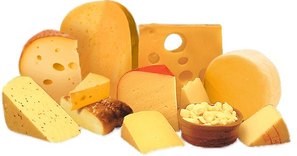 10. To Havarti and to Havarti Not 9. East of Edam 8. The Scarlet Cheddar 7. Colby-Dick 6. Ricottahouse 5 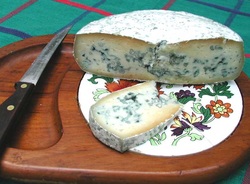 5. The Island of the Blue Cheese Dolphins 4. Ethan Fromage 3. The Gouda Earth 2. The Old Man and the Brie 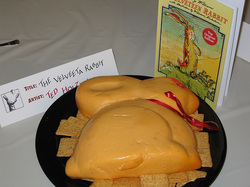 From the Seattle Edible Book Show And my number one favorite: The Velveeta Rabbit! You can read the entire Best of #CheeseLit blog post at Likely Stories, a Booklist Online blog by Keir Graff.
0 Comments
I discovered Wonderopolis, a fabulous website to use with children to enhance their natural curiosity about the world. You know how children are always asking questions? Well, adults should keep that mindset as well! Imagine the progress we'd make! They feature a wonder-of-the-day, which widget I have added to the home page of this website.
As the site notes: "Visit Wonderopolis®. It’s a place where wonder and learning are nurtured through the power of discovery, creativity and imagination." Wonderopolis is brought to life by the National Center for Family Literacy (NCFL) and supported by the Verizon Thinkfinity, the Annenberg Foundation, Better World Books and Humana. Sublime, sublime, sublime! I considered typing "nuff said" and being done with it, but when have I ever written short when I have the opportunity to write long? So...an examination of my favorite dessert and some of my favorite places to indulge!  I declare it's a perfect day for Dairy Queen! First, a bit of background... in 1984, President Ronald Reagan declared July as National Ice Cream Month and designated the third Sunday in July as a specific National Ice Cream Day. I never realized this until this year as I was perusing my Highsmith Librarian's Desk Calendar! I would have been heartbroken to think I had missed out celebrating this day for the past 28 years, except for the fact that I celebrate ice cream on a weekly basis...I didn't agree with him politically, but obviously we shared an affinity for frozen desserts made from dairy products. (Or perhaps he was getting major political contributions from the Dairy Farmers of America and the National Milk Producers Federation.) Flavor of the Month... The picture doesn't do it justice! My current favorite ice cream treat is Blueberry Pie from Oberweiss Dairy (a smallish operation located in Aurora, Illinois), but also available throughout the Chicago area and in Indiana, Michigan and St. Louis, Missouri. Oberweiss purchases milk from small-herd family farmers who do not use the rBGH bovine growth hormone. Blueberry Pie is a summer-only flavor; it's one of those super-super premium ice creams made with 18% butterfat. It's like two-two-two desserts in one: rich vanilla ice cream, not overly sweet, but incredibly creamy swirled with pockets of blueberry and chunks of crust. Oh, I faint just thinkin' about it! Favorite Places to Eat Ice cream for dinnerOn vacations when the girls were younger, my family tended to eat at odd times. We would get so engrossed in whatever we were doing that we lost track of time and often wound up eating lunch at 3 in the afternoon. So then we never really wanted dinner, a traditional dinner, that is. But 7 o'clock is always a perfect time for an ice cream dinner! 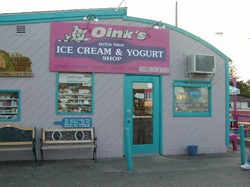 Oink's - New Buffalo, Michigan Every summer we make a weekend pilgrimage to the Michigan and Indiana Dunes country. After a hard day of climbing dunes, building sand forts and braving the icy waters of Lake Michigan, we usually stay overnight in New Buffalo, Michigan and our favorite place for an ice cream dinner is Oink's Dutch Treat. The place is chockful of porcine kitsch: signs, figurines, plaques, and 55 flavors of heavenly ice cream. Favorite flavors include Mackinaw Island Fudge, Moose Tracks, Chocomania and Cake Batter. Portions are huge and servers are friendly even in the face of lines out the door. Believe me, it's worth the wait. (They also have a candy and fudge shop next door.) 227 West Buffalo Street, New Buffalo, MI 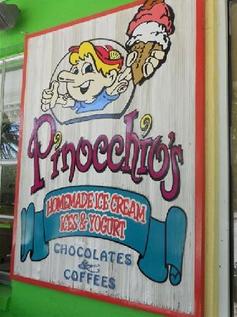 Pinocchio's - Sanibel Island, Florida If you happen to take a trip to Sanibel Island, Florida, a fantastic place for ice cream for dinner is Pinocchio's Original Homemade Italian Ice Cream. We discovered it one late afternoon on a bike ride to the lighthouse on the east end of the island. They make 130 different flavors offered on a rotating basis. Dirty Sand Dollar (caramel based ice cream with malted milk balls "whoppers" & chocolate flakes) has an excellent basis of cream-to-crunch and, if you are fond of coconut, Sanibel Krunch (vanilla ice cream with chocolate-covered toasted coconut and mixed nuts) is heaven in a waffle cone. If you prefer sorbet, the Mango is particularly fresh and tasty. 362 Periwinkle Way Sanibel, FL 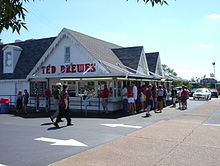 Ted Drewes - St. Louis, Missouri If you happen to be in St. Louis on business or pleasure or college campus scouting, you must stop in at Ted Drewes Frozen Custard. The place has been selling frozen custard since 1929 -- and apparently Christmas trees as well. We've only ever been there in the two-ton heat of a St.Louis summer and there's nothing better to take the edge off than a Cindermint Concrete (what they call their ice cream with mix-ins). It's like Christmas in July! 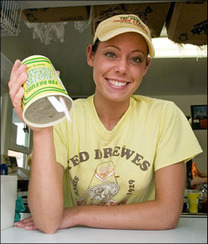 It's that thick! These concretes are blended so thick that the spoon does not fall out if the cup is turned upside down. Servers will often demonstrate this before handing your order to you. If you are not into peppermint, there's plenty of other candy and fruit ingredients to mix in for a delectable treat to beat the heat. What's the difference between traditional ice cream and frozen custard, you may be asking? According to the Ted Drewes website: "frozen custard must have at least 10% butterfat and 1.4% eggyolk. The amount of air, also known as overrun, truly separates frozen custard from traditional ice cream. Traditional ice cream has as much as 100% overrun, which causes ice crystals to form. Frozen custard has 20% overrun or less. This reduction of air is what give frozen custard its silky smooth texture." It is truly sublime! 6726 Chippewa, St. Louis, MO (btw, this is a section of historic Route 66) 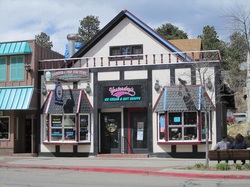 Yesterday's - Estes Park, Colorado In Estes Park, Colorado, in the shadow of the Rocky Mountains, you can get your ice cream fix at Yesterday's Ice Cream. They feature Blue Bell Ice Cream out of Brenham, Texas, which is available in only 16 states, mainly in the South. Yesterday's has a 40's and 50's vibe, plenty of antique signs, memorabilia and music. Oh, did I mention the ice cream? Southern Blackberry Cobbler is a favorite as well as Chocolate-covered Cherries and Pecan Pralines n' Cream. As an added treat, if you wander a ways down the road, you might happen to see some elk or other local fauna cross your path. 191 W Elkhorn Ave, Estes Park, Colorado I could go on and on... because, when in a new city, it is always my mission to find the best ice cream... but I think it's time to go celebrate National Ice Cream Day instead. Bon appetit!
Henry David Thoreau, born this day in 1817, was a Renaissance man who just happened to live in 19th century America. He was a poet and philosopher who worked for a time as a down-to-earth surveyor and pencil-maker, a naturalist who reveled in the wild but was absolutely not a cranky hermit, and a tax-resister who wrote the book, literally, on civil disobediance. 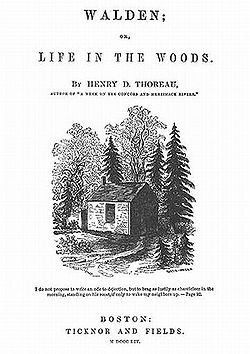 "A truly good book teaches me better than to read it. I must soon lay it down, and commence living on its hint. What I began by reading, I must finish by acting." Thoreau didn't go to Walden Pond just to commune with Nature. He was looking for a quiet place to do some writing and his friend Ralph Waldo Emerson had this nice rustic place on the water. It was perfect for getting a little solitude and being able to tune-out all the hassles of modern life! I can't imagine what he would think about our wired 24-7-365 lifestyle. He might be one of those people running down the street buck-naked, his crazed rants captured on someone's iPhone and posted to YouTube as it happens. As he noted in a chapter of Walden: "I went to the woods because I wished to live deliberately, to front only the essential facts of life, and see if I could not learn what it had to teach, and not, when I came to die, discover that I had not lived." He wasn't a Material Guy and frankly, wasn't pulling in a lot of benjamins at the time so he figured he could reduce his material needs by living simply, rather than support a lifestyle back in Concord that he didn't need or really care about. And if he could do a little communing and meditation, well, so much the better. 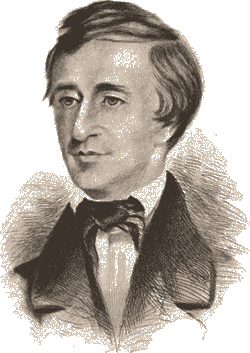 Portrait of Thoreau by Samuel Rowse (1854) In his famous lecture, "Life without Principle" given first in 1854 at Railroad Hall in Providence, Rhode Island and several more times over the course of the next year, Thoreau argued that work should be something we love in order to lead a life worth living, not simply to make a living. Well, that's all very well and good for a Harvard man to spout such idealistic notions, but he seems to have completely forgotten about the poverty-striken masses who were (and still are) struggling to pay the rent and put food on the table for their children. The ideal fulfilled life may indeed be found in pursuing a path that leads us to what we truly love to do, and then work doing that; however, the reality is that many people lack that freedom and must take a job because it comes with a paycheck. But I'm willing to forgive him because he did write a lot of great quotes about books! "Books are the carriers of civilization. Without books, history is silent, literature dumb, science crippled, thought and speculation at a standstill. I think that there is nothing, not even crime, more opposed to poetry, to philosophy, ay, to life itself than this incessant business." 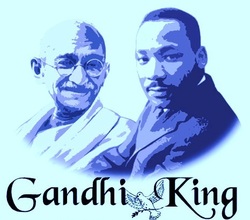 Mohandas Gandhi, Martin Luther King, Jr., Leo Tolstoy, Martin Buber and Supreme Court Justice William O. Douglas all have this in common: an admiration for Thoreau's essay of 1849 "Civil Disobedience," originally published as "Resistence to Civil Government." (It not clear whether he actually ever uttered the words "civil disobedience.")But beyond the big names, the essay was read in the 1940's by the Danish resistance; in the 1950's, it was brandished by those who opposed McCarthyism; in the 1960's, it was influential in the early struggle against South African apartheid; and in the 1970's it was discovered by a new generation of anti-war activists. The essay contains the famous quote often misattributed to Thomas Jefferson: "I heartily accept the motto, — ‘That government is best which governs least.'" Thoreau was actually was referring to an existing saying that was the motto for the journal The United States Magazine and Democratic Review, which was edited by American journalist and editor John Louis O’Sullivan. In 1844, Thoreau’s old pal Emerson also wrote in an essay: “The less government we have, the better.” (What's a little borrowing among friends?) Hmm, I foresee Thoreau's face soon will be glaring out at me from posters held aloft by Tea-Party protesters. Here's what his man-crush Emerson had to say about him: "He was bred to no profession; he never married; he lived alone; he never went to church; he never voted; he refused to pay a tax to the State: he ate no flesh, he drank no wine, he never knew the use of tobacco; and, though a naturalist, he used neither trap nor gun. He chose, wisely, no doubt, for himself, to be the bachelor of thought and Nature. He had no talent for wealth, and knew how to be poor without the least hint of squalor or inelegance. .... Thoreau was sincerity itself ..." You can read more about this fascinating fellow with these biographies, which range from the scholarly to the refreshingly whimsical:
Henry Thoreau: A Life of the Mind - Robert Richardson, Jr. (1988) Henry Thoreau: A Biography - Walter Harding (2011) Henry Thoreau: A Man for All Seasons - Douglas T. Miller (2001) The Thoreau You Don't Know - Robert Sullivan (2009) "People are hungry for stories. It’s part of our very being. Storytelling is a form of history, of immortality too. It goes from one generation to another." 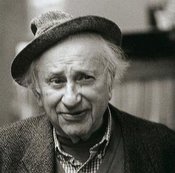 Studs (courtesy Chicago Historical Society) "Work is about a daily search for meaning as well as daily bread, for recognition as well as cash, for astonishment rather than torpor, in short for a sort of life, rather than a Monday-to-Friday sort of dying.”  Studs: suave (courtesy Chicago Historical Society) "More and more we are into communications; and less and less into communication.” "Perhaps it is this specter that most haunts working men and women: the planned obsolescence of people that is of a piece with the planned obsolescence of the things they make. Or sell.”  Louis "Studs" Terkel “I've always felt, in all my books, that there's a deep decency in the American people and a native intelligence -- providing they have the facts, providing they have the information.” And of course, his epitaph: "Curiosity never killed this cat."
Visit the Studs Terkel Centenary to hear recorded tributes (what else?!?!) to this amazing oral historian, the Chicago Historical Society archive for a gallery of his work, and a treasure trove of Studs at the New York Times. ...or better yet, romp in exuberant joy now that you are in that special place where the wild things are...
...an electrical energy saver and carbon reducer as efficient as a tree. On my morning run, my eye caught sight of a green tag hanging on a tree planted in a neighborhood parkway. I was so intrigued that I actually stopped to take a closer look.  According to the tag, the tree I was admiring (a fine maple) was worth $220 a year in environmental benefits. Of course, my inquiring librarian mind wanted to know more about this so I dashed home to my computer to do some research. As I soon learned through a few appropriate keyword searches and visits to the websites of the organizations prominantly featured on the tag, in my community (and several surrounding towns), the tags were created for Arbor Day by the Morton Arboretum and hung by volunteers from a variety of corporate and nonprofit organizations. 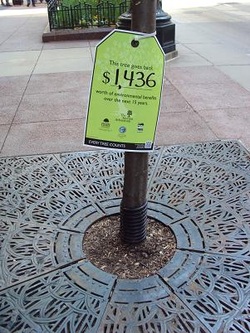 Trees in an urban environment are worth even more! The tags call attention to how it really does pay to plant trees by highlighting and placing a monetary value on energy savings, carbon reduction and increases in property values. Science can actually calculate these benefits. Trees shade homes, reducing the amount of cooling energy a homeowner uses and the accompanying electrical bill. Trees remove carbon dioxide, the infamous greenhouse gas, from the atmosphere, by absorbing it and using it in the process of photosynthesis. Tree roots catch rain, thus decreasing the amount of water that runs off into storm water systems.  Photosynthesis (courtesy of Britannica Online) If you'd like to find out how much your trees are worth, you can use the National Tree Benefit Calculator which was created by Casey Trees of Washington D.C. and the Davey Tree Expert Company. Just type in your zip code, then choose the tree species and enter its diameter. Clicking on the different tabs will provide more information about specific benefits. If you are not sure about what kinds of trees you have, check out the Arbor Day Foundation or the Dichotomous Tree Key (from the Wisconsin Department of Natural Resources) or visit your library, where a friendly, environmentally aware librarian will help you find a book so you can... read more about it! Here endeth the science lesson... Best estimate of the date of Shakespeare's birth: April 23, 1564. Celebrate the Bard by talking like Shakespeare; listening to a hip-hop summary of MacBeth; finding the just-right, highfalutin insult to the driver who cuts you off in traffic!
In 1954, Darrell Huff published a witty, informative exposé of the use of statistics by advertisers, the government and the media to mislead their audiences, called How to Lie With Statistics. Over the course of an entertaining 142 pages, Huff explained how the statistically challenged reader can see through the smoke and mirrors to get to the real meaning, if any, of what is being presented. I happened to stumble across a tattered copy of this book as an impressionable ten-year-old and remember enjoying it primarily for its cartoon illustrations. However, I like to think that it also started me down the path of being a keen observer of charts, graphs, and numbers, especially when they are being used to try to convince me of something. 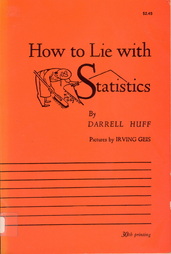 The original cover! So it was with some amusement that I read an e-article that came over the transom. It's a reposting of a blog by fellow librarian Joyce Valenza which deconstructed an argument that Wikipedia was superseding libraries in the public's endless quest for information. Deconstructed? Nay! She sliced and diced the argument to shreds with the critical thinking skills of a true teacher-librarian born to the profession. The article's focus was an infographic that Open Site, the self-proclaimed "free Internet Encyclopedia" (wait, I though that was Wikipedia--- never mind) posted, which stated that Wikipedia had forced the print-version of Encyclopedia Britannica out of business. Here it is, for your amusement: I know what you are saying: "Whoa, those are a lot of statistics!" And I am replying: "Oh yes, a lot of unsupported and distorted statistics." And you are saying: "But look at all those sources!" And I am replying: "Oh yes, but remember, in the immortal words of Darrell Huff, that 'the secret language of statistics, so appealing in a fact-minded culture, is employed to sensationalize, inflate, confuse and oversimplify.'" 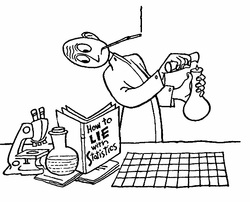 Cooking up the "big lie?" As Ms. Valenza notes, comparing library visits to Wikipedia visits, as the infographic purports to do, is a bit of an apples vs. oranges comparison, since one is achieved with the click of a mouse and one person can click repeatedly throughout the day (or night, if that person is an insomniac). Ms. Valenza goes on to ask some very pertinent questions about the research methods of the infographic creators, the types of questions that teacher-librarians need to instruct their students to ask, the types of questions that Darrell Huff was writing about in 1954: Which libraries are these people measuring? What students? And students are generally required to use multiple sources, so which do they consult after Wikipedia? How does YouTube factor into the equation? And where did they get the figure that books have declined by 12%? And after the Great Recession hit, library use increased! As Ms. Valenza notes, the authors of this infographic seem to need a lesson in improving their own research skills. And are we supposed to be impressed that there's an increase in students who are plagiarizing Wikipedia? Or more impressed that teachers are becoming more savvy in catching it? Eeeesh! But don't take my rehash as the final word. Check out the original blog post by Ms. Valenza at School Library Journal: the Never Ending Search. Kudos, Joyce! But I did learn that Wikipedia is looking for female editors...maybe I'll apply! |
AuthorTo find out more about me, click on the Not Your Average Jo tab. Archives
February 2024
Categories
All
|


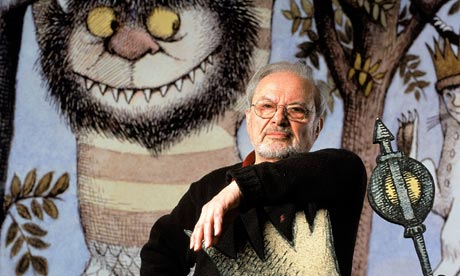


 RSS Feed
RSS Feed